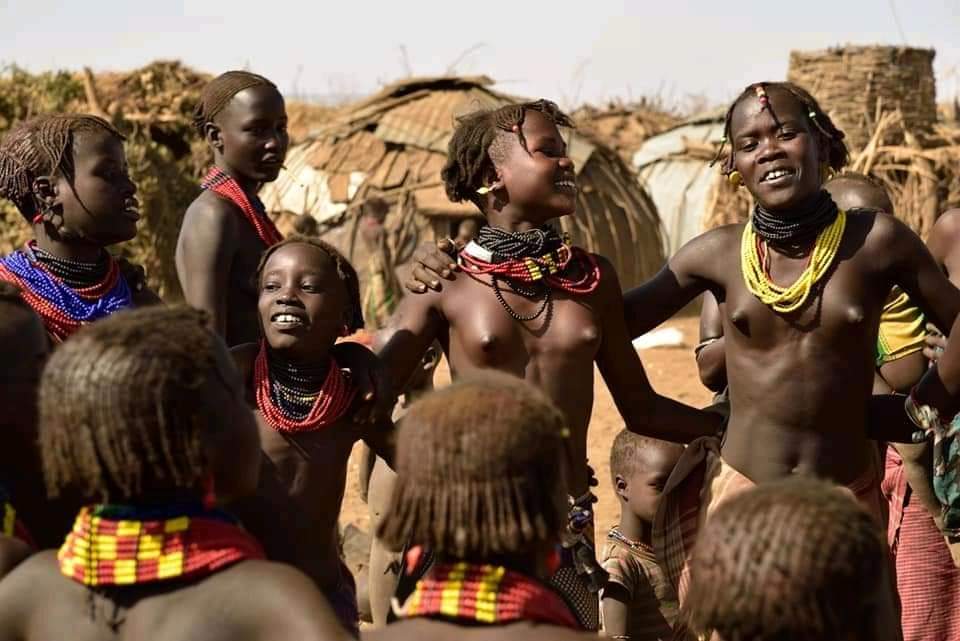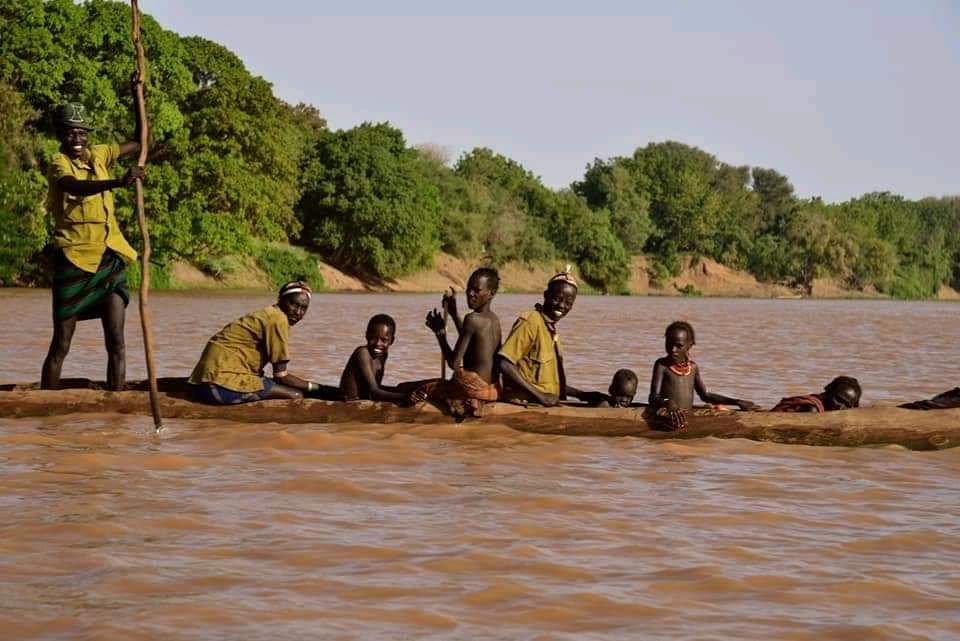The Dassanech or Dasenech, also known as Geleb, are an indigenous Cushitic-speaking ethnic group residing in Ethiopia and Kenya. They have traditionally inhabited the southern region of the Omo Valley, specifically the Omorate District, which is in close proximity to the border between Ethiopia and Kenya. The population of the Dassanech community currently stands at 47,440 individuals.
To Visit the Dassanech Tribe and Villages, you need to have permission from the Immigration office in Omorate Town. To obtain a permit, you must show your passport and visa. you can cross the Omo River by Boat or drive on a bridge to reach the village.
The Dassanech have a deep connection to their ancestral lands, which are characterized by vast grasslands, riverbanks, and semi-arid environments. Their traditional way of life revolves around pastoralism, agriculture, and fishing.

Nomadic Life and History of the Dassenech Tribe
Based on the oral tradition of the Dassanech tribe. it is believed that their ancestral homeland was situated in an area referred to as Koro, located in Northern Kenya. Subsequently, due to an extended period of drought, the tribe members made a collective decision to migrate northward in pursuit of improved water resources and more fertile grazing lands. During their journey north, they eventually stumbled upon the desired new territory.
But things were not always good, as the New Land is already occupied by the Borena tribe who are members of the Oromo tribes. Despite this, the new arrivals remained undeterred in their pursuit of the new land, which offered ample resources such as a large river and abundant pasture. They were resolute in their determination to claim the new land, even if it meant engaging in an all-out war against the Borenas. Conversely, the Borenas, being pastoral people, had no intention of yielding and firmly resolved to defend their territory.
Over time, tensions escalated between the two groups. Initially, this manifested in cattle theft and minor skirmishes resulting from a lack of neighborly relations. However, as time passed, these minor clashes evolved into a full-scale war between the two tribes.
The duration of the hostilities and the number of casualties on both sides remain unknown. However, it is established that the Dassaneche emerged victorious and subsequently took control of the regions along the banks of the Lower Omo.
Culture and Way of Life of the Dassanech Tribe
The Dassanech tribes, like the neighboring tribes of the Omo Valley, have a deep-rooted tradition of pastoralism. They rely on livestock, particularly cattle, for their sustenance. Their staple food is a porridge made from corn or sorghum. Additionally, they relish crocodile meat and eggs, as well as fish. Among members of the Dassanech clan, donkey meat is considered a delicacy reserved for esteemed guests at wedding celebrations.

The Dassanech people are known for their deep sense of pride and a rich history of courage. Each individual within the clan prefers to be addressed as Misso, a term in the Dassanech language that signifies a comrade-in-arms. In addition, the Dassanech community showed great patriotism during the five years of Italian occupation of Ethiopia. The enemy repeatedly attempted to persuade the tribesmen to join forces against Ethiopian patriots fighting against the occupying troops, but the Dassanech people remained resolute in their refusal to collaborate with the enemy. The Italian occupation army had also demanded that the Dassanech people surrender their weapons, yet they remained steadfast in their commitment to their long-standing tradition of bravery.
Similar to their ancestors from Koro, the Dassanech, also known as the Geleb, continue to lead a predominantly nomadic lifestyle, constantly moving from one location to another in search of fresh pastures and grasslands. Members of the Tribe, are divided into eight distinct clans. It is important to note that marriages between individuals belonging to the same clan are strictly forbidden.
Within the Dassanech community, the practice of dowry serves as a fundamental element in the union of a man and woman in matrimony. The groom is expected to present the bride’s family with a gift of livestock, which may consist of up to 50 head of cattle, depending on the number of livestock owned by the parties involved. It is permissible for a man to take up to 12 wives.
The Dassanech community practices four distinct forms of matrimonial unions.
- Arranged marriage: This type of marriage is orchestrated by the families of the individuals involved, where the decision-making authority lies with the parents or guardians.
- Consensual marriage: In this form of marriage, the individuals willingly enter into a marital union based on mutual agreement and consent.
- Marriage through abduction: Although this practice has been deemed illegal by the government, instances of abduction for marriage still occur on occasion, but only if both sets of parents are in agreement.
- Marriage by inheritance: This type of marriage occurs when a person inherits the spouse of a deceased sibling or relative, thereby continuing the lineage and fulfilling familial obligations.
It is possible to Know a woman’s marital status based on her hairstyle. Unmarried women tend to have a portion of their hair styled towards the front, while married women typically style all of their hair towards the back.
The Dassanech dwellings are constructed with a simple yet precise design, utilizing a framework of branches that are covered with hides and patchwork. This allows families to disassemble the structure, transport it on the backs of their donkeys, and rebuild it in a new location as needed. Women are responsible for the disassembly and reconstruction of the dwelling.
The majority of tasks are carried out by women, while men reserve their energy for masculine responsibilities such as intertribal conflicts, cattle theft, and raids. The tribesmen dedicate a significant amount of time and effort to the care and management of their cattle. They graze their herds in the lush grasslands of the Omo Valley, ensuring that the animals have access to abundant food and water sources. The tribesmen also protect their cattle from predators and diseases, employing various traditional methods passed down through generations.
Within the Dassanech community, feasts are a common occurrence, including wedding celebrations and funeral ceremonies. The Emi Feast, which is held in conjunction with the circumcision of girls, is renowned for its extraordinary nature. Girls from the same area undergo the circumcision ritual together, and numerous calves are sacrificed to commemorate the occasion. For young Dassanech boys and girls, almost every evening presents an opportunity for celebration and enjoyment.
The Dassanech people also possess a strong sense of communalism, placing great value on cooperation and mutual support. They maintain a distinct cultural identity, which is expressed through their unique language, traditional attire, and artistic customs. Their intricate beadwork is particularly renowned, as it is utilized to create vibrant jewelry and embellishments. These adornments hold symbolic significance and are frequently worn during significant ceremonies and festivities.
